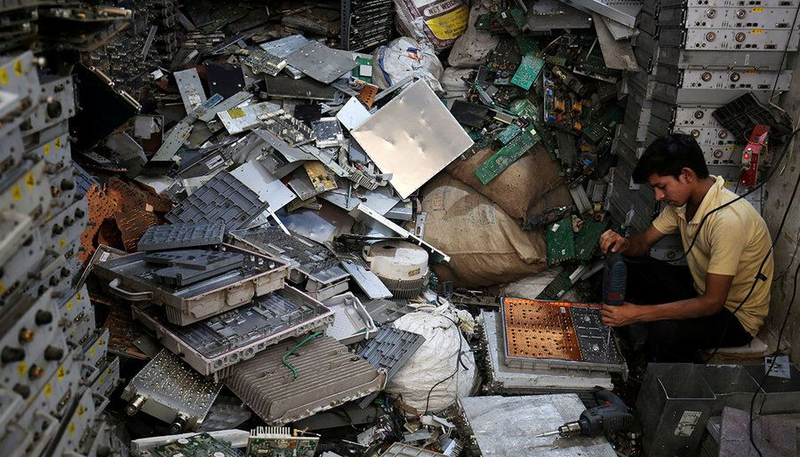Effective and binding action is urgently required to protect the millions of children, adolescents and expectant mothers worldwide whose health is jeopardized by the informal processing of discarded electrical or electronic devices according to a new ground-breaking report from the World Health Organization.
With mounting volumes of production and disposal, the world faces what one recent international forum described as a mounting “tsunami of e-waste”, putting lives and health at risk.” said Dr Tedros Adhanom Ghebreyesus, WHO Director-General.
As many as 12.9 million women are working in the informal waste sector, which potentially exposes them to toxic e-waste and puts them and their unborn children at risk.
Meanwhile more than 18 million children and adolescents, some as young as 5 years of age, are actively engaged in the informal industrial sector, of which waste processing is a sub-sector. Children are often engaged by parents or caregivers in e-waste recycling because their small hands are more dexterous than those of adults. Other children live, go to school and play near e-waste recycling centres where high levels of toxic chemicals, mostly lead and mercury, can damage their intellectual abilities
Children exposed to e-waste are particularly vulnerable to the toxic chemicals they contain due to their smaller size, less developed organs and rapid rate of growth and development. They absorb more pollutants relative to their size and are less able to metabolize or eradicate toxic substances from their bodies.
Workers, aiming to recover valuable materials such as copper and gold, are at risk of exposure to over 1,000 harmful substances, including lead, mercury, nickel, brominated flame retardants and polycyclic aromatic hydrocarbons (PAHs).
For an expectant mother, exposure to toxic e-waste can affect the health and development of her unborn child for the rest of its life. Potential adverse health effects include negative birth outcomes, such as stillbirth and premature births, as well as low birth weight and length. Exposure to lead from e-waste recycling activities has been associated with significantly reduced neonatal behavioural neurological assessment scores, increased rates of attention deficit/hyperactivity disorder (ADHD), behavioural problems, changes in child temperament, sensory integration difficulties, and reduced cognitive and language scores.
Other adverse child health impacts linked to e-waste include changes in lung function, respiratory and respiratory effects, DNA damage, impaired thyroid function and increased risk of some chronic diseases later in life, such as cancer and cardiovascular disease.
E-waste volumes are surging globally. According to the Global E-waste Statistics Partnership (GESP), they grew by 21% in the five years up to 2019, when 53.6 million metric tonnes of e-waste were generated. For perspective, last year’s e-waste weighed as much as 350 cruise ships placed end to end to form a line 125km long. This growth is projected to continue as the use of computers, mobile phones and other electronics continues to expand, alongside their rapid obsolescence.




